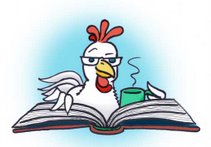There's a lot of controversy about the age at which children are ready to learn or read about the Holocaust; I've heard different educators say with equal conviction that 5th grade is too young and that you can discuss the topic with preschoolers if you do it sensitively. My own opinion leans toward the wishy-washy "it depends on the kid" side. Five Owls has a good article on the subject here. The author, Lisa Silverman, also published an excellent article on Holocaust picture books in a recent issue of School Library Journal.
Today our school observed Yom HaShoah, or Holocaust Memorial Day. For the 4th grade class, I pulled out a bunch of those picture books and put them on the tables for silent reading. I read them Keeping the Promise: A Torah's Journey, which tells the story of the miniature Torah that Israeli astronaut Ilan Ramon took into space with him on the ill-fated Space Shuttle Columbia mission in 2003. The Torah had been given to profesor Joachim Joseph as a Bar Mitzvah present when Joseph was a 13-year-old inmate at Bergen-Belsen concentration camp. The Rabbi who gave him the Torah asked him to promise to tell the story, and he passed it on to Ramon so that the entire world, watching broadcasts of the shuttle voyage, could hear that story.
When the book was finished, I asked the class if they thought Ramon shouldn't have taken the Torah into space with him, given that this precious artifact is now lost forever after the shuttle crash. Which is more important: the object, or the story? Both, they said. But it's better to have the story and no physical Torah than to have the object but not know the story that goes with it.
Then we read a book about an artifact whose story has been lost and can only be imagined: Who Was the Woman Who Wore the Hat? The author, Nancy Patz, saw a woman's hat in a glass case at a Holocaust museum in Amsterdam. The display had no label and no explanation. She found herself drawn to the image of the hat, and wondered about the woman who wore it: what was her life like? How did she like her coffee? What happened to her? She drew the hat on the heads of various imagined women, juxtaposed with images of people being rounded up, peering from trains. The result is a spare, haunting picture book. Because the book is physically small it would be hard to share with a large class. but this 4th grade happens to be small also, so they gathered in and listened thoughfully until the book was over.
Do you have to know someone's story to remember them? We wondered afterwards. Or can you remember by imagining? They had a lot to say on the subject.
Another Holocaust book based on an artifact is Hana's Suitcase, by Karen Levine. It's too long to read aloud in a single sitting, but makes a great longer-term read-aloud. I'm pretty jaded about Holocaust books, but this one knocked me back with its clear, sensitive writing, and with the true story it relates: about one girl caught up in the Holocaust; about a group of Japanese students devoted to learning and teaching about an event far from them in time and space; and about the teacher who's determined to solve the mystery of the suitcase. The author manages to write about a scary, painful subject without either sensationalizing or holding back, and makes historical research seem pretty exciting, in the bargain. A remarkable story.
Subscribe to:
Post Comments (Atom)

4 comments:
This is a lovely post. I enjoy reading about how you shared these books and stories with your students. I posted a poem sent to me by a friend for celebrating Yom HaShoah. It just happened to come to me on the day I took a photo of one of my first dandilions, and the poem was about appreciating small beauties in a concentration camp. It was very touching.
Thank you for this post. It's a topic I've worried about.
I don't know when my first-grader (in public school, attending Hebrew School on Sunday mornings) will learn about the Holocaust in school. I'm thinking I will not introduce it as a topic unless he hears something about it and asks me for more information. I will keep these lists until needed.
Do you have any similar thoughts on when to tell children about the September 11 attacks, and any books that might be helpful? Since my son was a toddler when they happened, he doesn't remember it and we've never discussed it with him.
It's really a question of who you are reading the book to.If the child has questions and wants to know about why attrocities have taken place, maybe books like these will help. When I think of the holocaust, my skin crawls to this day. Books like the ones you described will do a better job than text books can.
I want to share a book site with you. It will be a great resource for you.
Thanks!
I'm one who feels such topics are best introduced when children are developmentally ready --- and in ample historical context. I've written about the Holocaust in particular (but think it applies to 9/11 too) in my book Seeking History and on my blog here:
http://medinger.wordpress.com/2007/03/26/the-holocaust-and-shoelaces/
and here:
http://medinger.wordpress.com/2006/11/11/the-holocaust-for-young-children/
BTW, I'm first generation American and my family on both sides is German Jewish (some were killed,some left, some made it through)and I live in NYC and experienced 9/11 and its still lingering aftermath firsthand.
Post a Comment